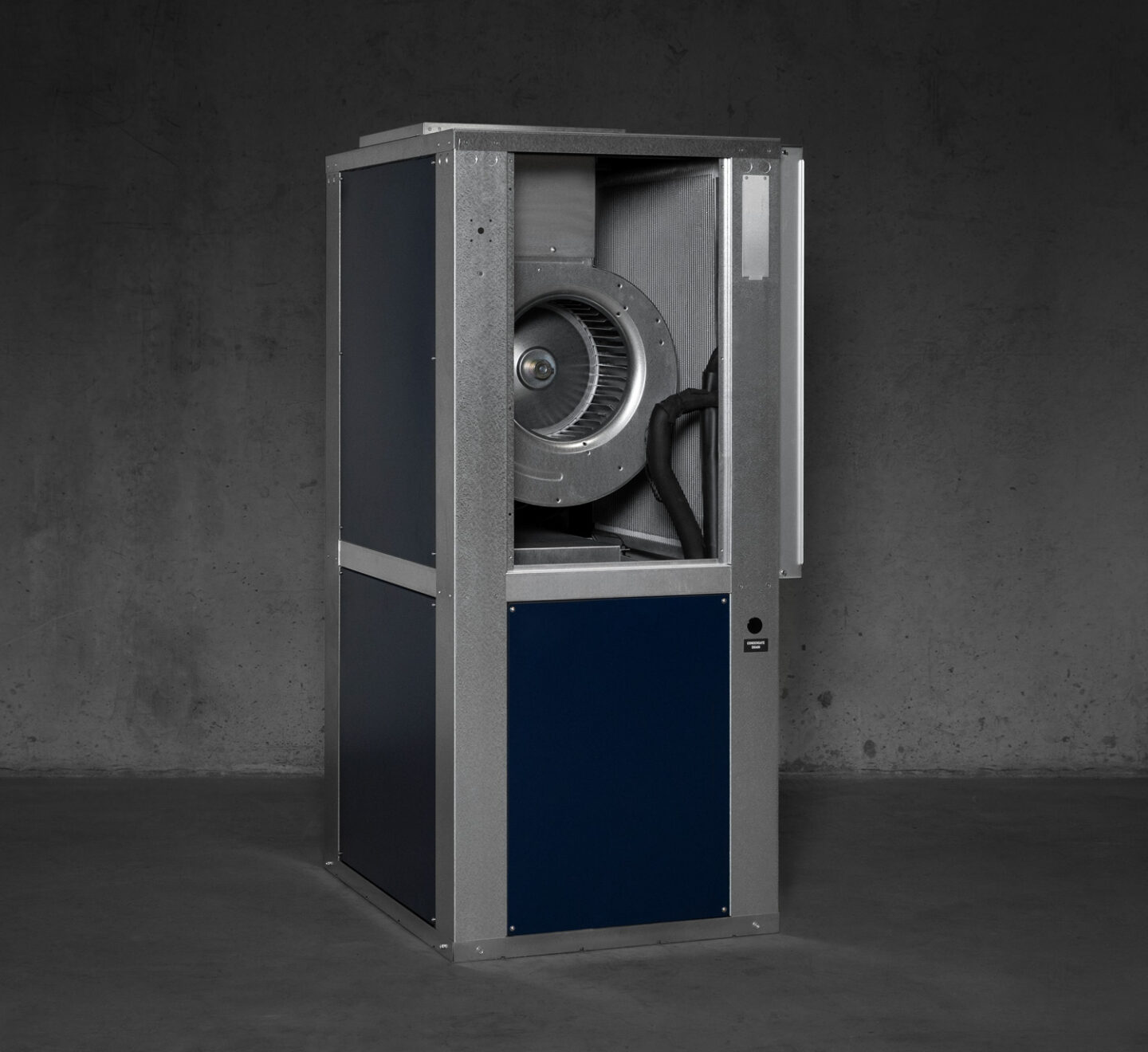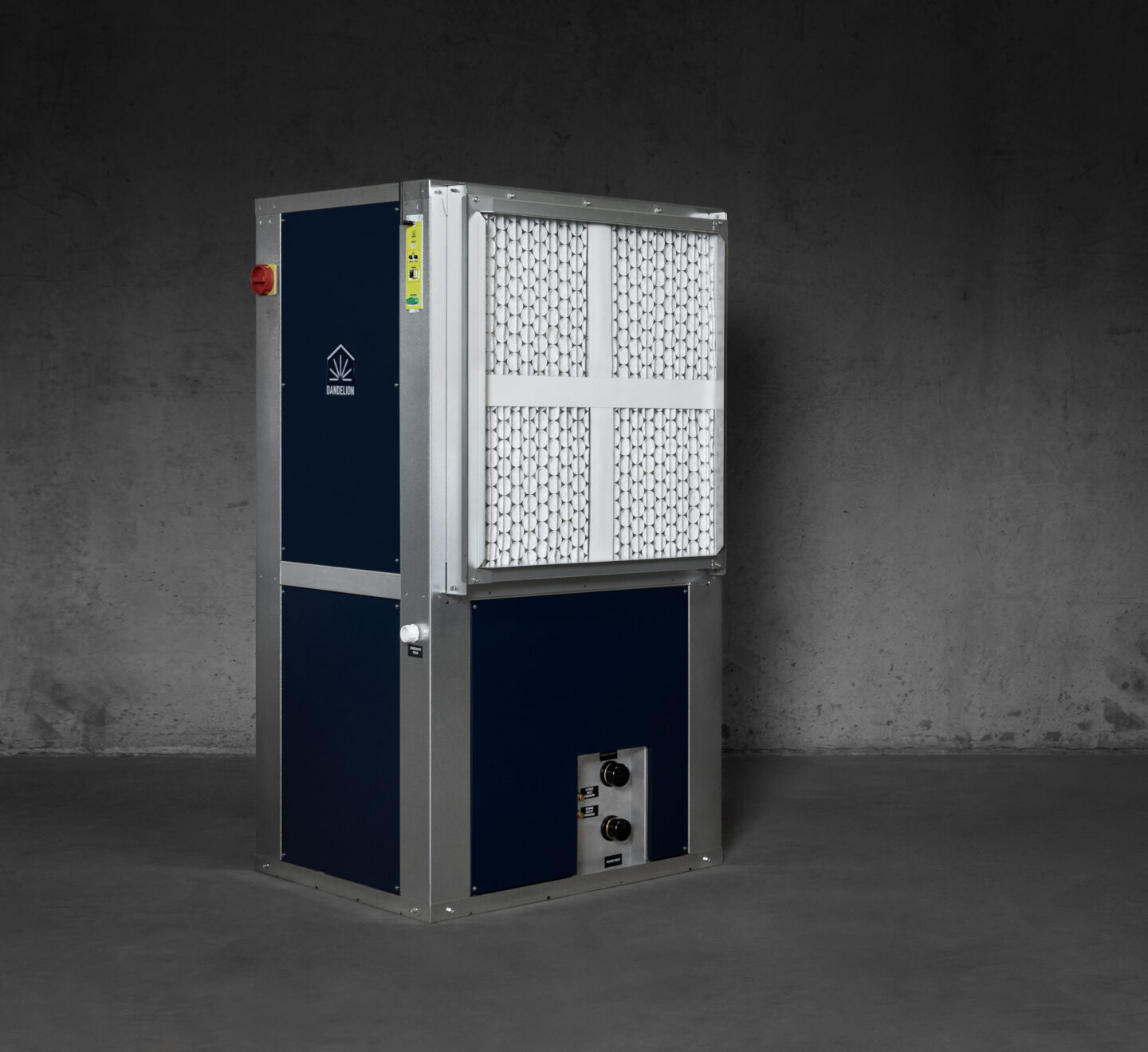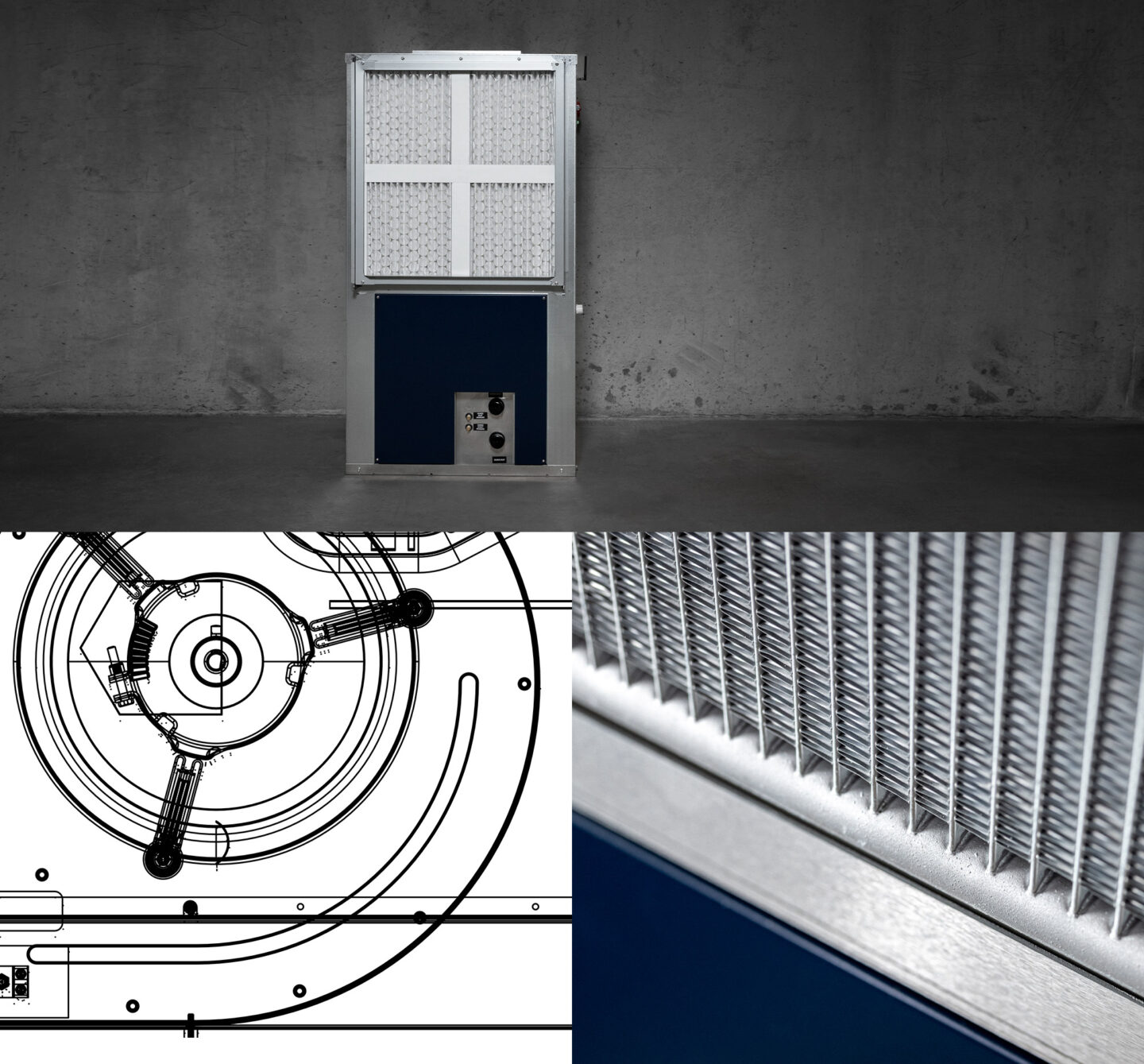The highest performing all-in-one heating and cooling solution
- 2x more efficient than an air source heat pump
- >4x more efficient than a furnace
- Built for extreme weather. No back up system needed.

- Innovative heat exchangers The Geo contains a plate heat exchanger and a proprietary air coil design that allows it to move heat from the ground to the home and back super efficiently, resulting in an unparalleled COP and heating capacity.
- Heats air up to 120F Unlike most heat pumps, which heat air to around 100F, the Geo can heat air up to 120F. This allows it to heat the home using less air, resulting in exceptional compatibility with existing ducts and super quiet operation.
- Avoids main panel upgrades Dandelion Geo requires just one 60A breaker, so it can work with most homes' electrical panels and avoid project delays.
- More heat, more savings With higher efficiency, more heat delivered, and greater compatibility with a home’s ductwork and electrical system, the Dandelion Geo offers greater performance and greater savings than any other heat pump out there.

How we stack up against the competition
| Dandelion Geo | Other geothermal heat pumps | |
|---|---|---|
| AHRI full load heating capacity (Btu/hour) | Up to 63,000 | Up to 57,900 |
| COP (heating efficiency) | Up to 5.2 | Up to 4.8 |
| Minimum airflow | 230 CFM/ton | ≥250 CFM/ton |
| Required breaker sizes for unit with auxiliary (electrical) | 60A single electrical connection required for a 6T | ≥120A, two electrical connections required |
| Monitoring | Built-in | Sold separately |
| Ground loop pumps | Built-in | Sold separately |
Tech specs
| Model | Size | Load | Heating Capacity (BTU/HR) | COP | Cooling Capacity (BTU/HR) | EER | Breaker Size |
|---|---|---|---|---|---|---|---|
| GEO-072 | 6 Ton | Full | 61,000 | 4.3 | 70,000 | 17.5 | 60A |
| Part | 49,000 | 4.6 | 57,000 | 24.5 | |||
| GEO-060 | 5 Ton | Full | 53,000 | 4.3 | 62,000 | 17 | 50A |
| Part | 42,000 | 4.7 | 47,000 | 22.1 | |||
| GEO-048 | 4 Ton | Full | 41,500 | 4.4 | 51,500 | 18.8 | 40A |
| Part | 32,700 | 4.9 | 37,200 | 23.5 | |||
| GEO-036 | 3 Ton | Full | 31,000 | 4.6 | 39,200 | 19.8 | 40A |
| Part | 25,000 | 5.1 | 29,100 | 24.8 |
